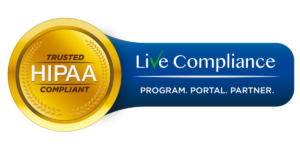Imagine a world where chronic disease patients spend less time in hospital beds and more time living their lives. No more scrambling to the emergency room with uncontrolled blood sugar or breathless nights grappling with heart failure. This future isn’t a sci-fi fantasy; it’s the promise of remote patient monitoring (RPM), a technological revolution transforming the way we manage chronic conditions.
For millions battling diabetes, hypertension, COPD, and other chronic illnesses, the healthcare system can feel like a revolving door. Frequent readmissions, reactive care, and the constant fear of flare-ups disrupt lives and strain healthcare resources. But RPM empowers patients to become active participants in their own health journeys, shifting the focus from patching up problems to preventing them altogether.
So, how does RPM work its magic? Imagine a network of wearable devices, smart sensors, and telehealth platforms working in harmony. Your blood pressure cuff automatically sends readings to your doctor, a continuous glucose monitor keeps tabs on your sugar levels, and a pulse oximeter silently watches over your oxygen saturation. This constant stream of real-time data becomes a map of your health, giving you and your healthcare provider a bird’s-eye view of your well-being.
The Benefits of Early Detection are Astronomical:
Subtle changes that might otherwise go unnoticed are flagged, allowing for timely intervention before full-blown episodes occur. Imagine catching a spike in blood pressure before it triggers a stroke, or identifying a developing lung infection before it leads to hospitalization.
Data-driven insights guide medication adjustments, optimizing treatment and minimizing side effects. No more one-size-fits-all approach – your medication regimen becomes as dynamic as your body’s needs.
Empowered patients and engaged families are key to success. Real-time data translates into knowledge, giving patients the power to make informed decisions and families the ability to provide targeted support. Imagine Sarah, a diabetic, confidently managing her condition thanks to continuous glucose monitoring and remote consultations with her doctor, or Emily, finding peace of mind knowing her mother’s oxygen levels are always monitored, even at night.
But is it all just theoretical promises? Absolutely not. The evidence speaks volumes:
A 2020 study published in BMJ Open found that RPM for cardiovascular disease and COPD reduced hospital admissions by 49% and emergency department visits by 41%.
Another study in the Journal of Telemedicine and Telecare showed that RPM for heart failure patients reduced readmission rates by 56% over 12 months.
A review of 91 studies by the Cochrane Collaboration concluded that RPM likely reduces acute care use for patients with chronic conditions.
These aren’t just numbers; they’re stories of lives transformed. John, struggling with heart failure, feels empowered by his RPM device’s alerts, preventing a potentially life-threatening episode. Sarah, a diabetic who used to miss work for frequent blood sugar checks, now confidently manages her condition thanks to remote consultations. These are just glimpses into the future of chronic care, a future where RPM paints a vivid picture of your health and guides you towards a healthier tomorrow.
Challenges? Of course. Cost, technology access, and integration with existing healthcare systems are hurdles that need to be addressed. However, the potential cost savings from reduced hospital admissions and the undeniable value of improved patient outcomes make RPM an investment worth pursuing. Imagine the healthcare system shifting from a reactive, expensive model to a proactive, preventative one – the benefits would be immeasurable.
RPM is not just a technological trend; it’s a paradigm shift in how we manage chronic conditions. By placing patients at the center of care, empowering them with data, and enabling proactive interventions, RPM has the potential to revolutionize chronic care, bringing down acute care usage, improving patient well-being, and shaping a healthier future for all.
This is just the beginning. As RPM evolves, we can expect even more exciting developments:
Specific RPM use cases tailored to different chronic conditions, from asthma to Parkinson’s disease.
Advanced analytics and AI to glean deeper insights from patient data, paving the way for personalized medicine.
Seamless integration with existing healthcare systems, creating a comprehensive and connected ecosystem for chronic care management.
The road ahead is bright. Exciting advancements await – tailored RPM solutions for diverse chronic conditions, AI-powered insights shaping personalized medicine, and seamless integration for a connected healthcare ecosystem.
Let’s not be mere spectators in this revolution. Let’s advocate for RPM, explore its possibilities, and share our stories. Together, we can unlock the full potential of this technology and build a healthcare system that empowers prevention, optimizes wellness, and makes “chronic care” a relic of the past.
Remember, this is just the beginning. Take this torch, keep the conversation going, and illuminate the path towards a healthier future for all.
Let chronic care be chronic no more. It’s time for our health revolution to begin.
